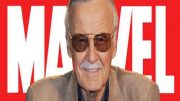The single biggest change in marketing of our lifetime may be the answer to this question, “Who is your customer?” If you wonder why most organizations fail, it’s because they have not answered this critical question for their organization. It seems so obvious, but the answer may surprise you.
In the past, organizations who sold to a large number of customers were insured a moderate level of success. It wasn’t always about quality, but it was about quantity. Businesses were built on the idea of selling a lot and making money through the volume of sales. This idea may be changing, but are we changing to match the new market conditions? People today want products designed and produced for them, not the masses. Today’s consumers of your products and services expect to have a great experience when they buy. But how do we change the way we develop our products and services to meet the changing taste of our markets and, more importantly, our customers? I think we can look to Steve Jobs and Apple to see how customers buying activities are changing.
Steve Jobs understood the importance of creating products for the individual in a mass. If you say that’s not true, think about how Steve was a master innovator, a creator of everything cool. People thought, “He gets me.” I think Steve’s product development cycle is something that many organization leaders can learn from. In Apple’s case, their ability to target their product development to critical markets is a lesson that we can all learn from. Steve and his teams were brilliant at understanding what we want from a company we buy from. This may be the lasting legacy of Steve Jobs.
The first strategy revolves around identifying who our customer is. Many organizations have been extremely slow to adopt a mindset of understanding who their customers are. Determine who your primary customers are. It’s no longer acceptable to sell to the masses. People want to feel that you understand them and their world. They need to know that we understand what they value. What values we choose to match are critical to connecting with today’s global customer. If they don’t find a connection, you’re not going to get them to buy. It’s that simple. Good organizations are looking for small clues while still looking at the big picture. Hard to do, but critical to success in today’s fast changing markets.
The second strategy is value perception. How does your customer perceive your product? For many years, people judged the value of an auto by the sound the door made when it was opened and closed. Crazy, huh? Watch a woman shop for a sweater or a new dress. She’s evaluating several things in less than the first 30 seconds. Most of her decision making process isn’t even on the conscious level. This is where marketing and peer pressure start to take effect. Once the basic value perception is achieved, it’s the intangibles that may close the deal. But many companies fail to understand how their buyers buy. Value perception for most products and services are in the intangibles. The intangibles are found by studying your best buyer and determining why they buy. Not through statistics but through first hand observations and discussions. Are you meeting and exceeding the demands of your best customer? If not, why not? It’s critical to your organization’s success.
The third strategy is embracing the few and forgetting the many. For many of my best clients, the biggest decision they must make is who are their best customers and stakeholders. When I work with many high growth organizations they tell me they can serve everyone. Very seldom are they correct. They tell me look at Bill Gates and Warren Buffet. They own businesses that serve everyone. I then try to point out to them that there are few Microsofts or Coca Colas in the world. These men have grown their wealth on being selective in what they do, even if it’s on a global scale. Successful organizations and investors are willing to walk away from bad customers, and so should you. Actually, I find that most of my best clients understand this even if they don’t talk about it much. Most of their wealth was created in the ability to get the right people invested at the right time. Learning how to create the right offering at the right time for the right people is critical to your organization’s success.
The final strategy I learned from Steve Jobs was cool is always pricey. But it’s not always expensive to produce. You must look for opportunities to thrill your best customers. Who would have imagined that your phone would become a status symbol? Go almost anywhere and you will see people pulling out their phone-digital camera- communications center and showing off its newest capabilities. It’s no surprise that kids today buy expensive phones and do all kind of amazing things with them. It’s a hard economy. They don’t have the money for a new car, but they can make people green with envy over their new phone. As a marketer, there is a critical lesson to be learned.
Over the next several weeks we will share different success stories that show how you might apply these simple strategies to your organization for greater success.




Be the first to comment on "Who Is Your Customer?"